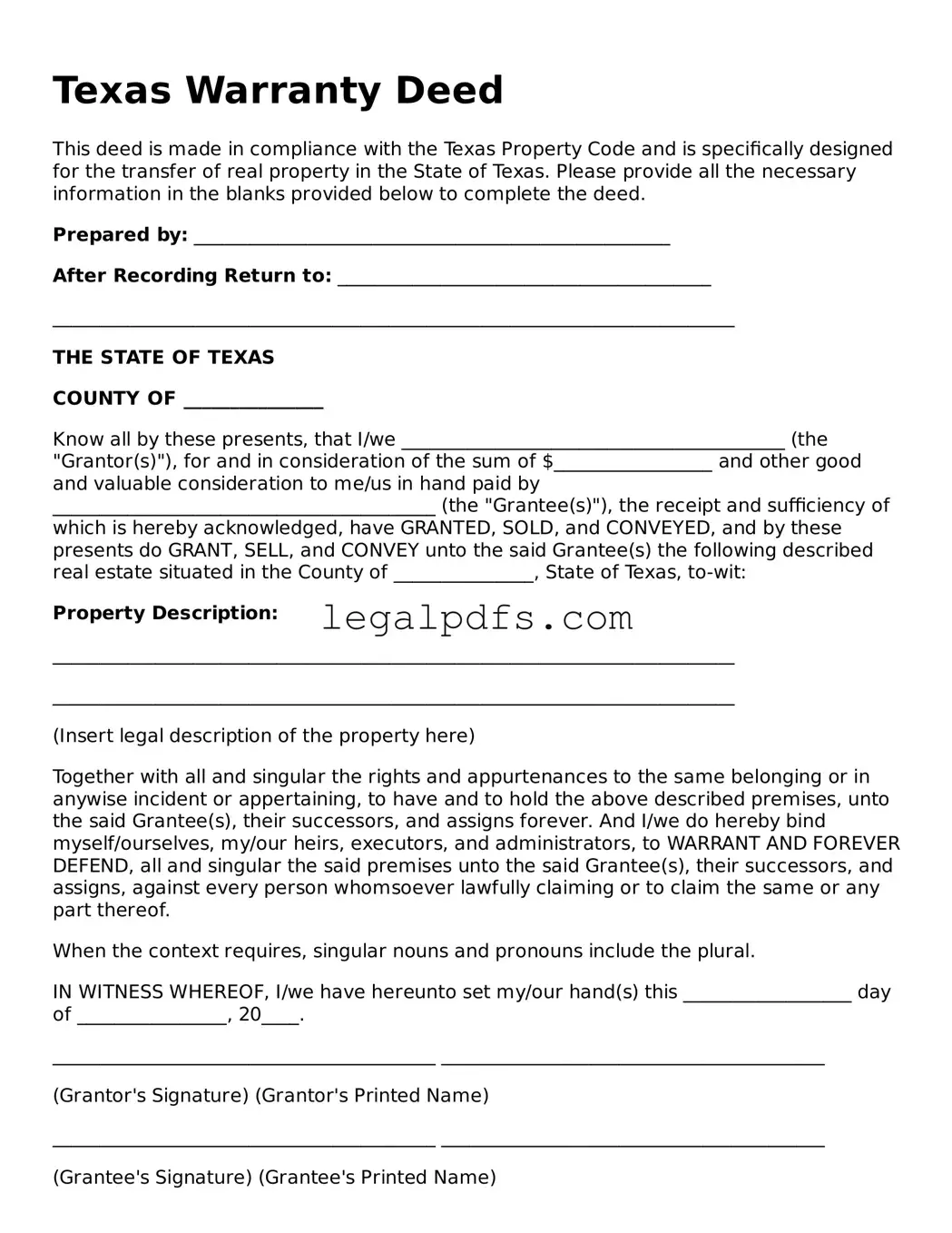Texas Warranty Deed
This deed is made in compliance with the Texas Property Code and is specifically designed for the transfer of real
property in the State of Texas. Please provide all the necessary information in the blanks provided below to
complete the deed.
Prepared by: ___________________________________________________
After Recording Return to: ________________________________________
_________________________________________________________________________
THE STATE OF TEXAS
COUNTY OF _______________
Know all by these presents, that I/we _________________________________________ (the "Grantor(s)"), for and in
consideration of the sum of $_________________ and other good and valuable consideration to me/us in hand paid
by _________________________________________ (the "Grantee(s)"), the receipt and sufficiency of which is
hereby acknowledged, have GRANTED, SOLD, and CONVEYED, and by these presents do GRANT, SELL, and CONVEY
unto the said Grantee(s) the following described real estate situated in the County of _______________,
State of Texas, to-wit:
Property Description:
_________________________________________________________________________
_________________________________________________________________________
(Insert legal description of the property here)
Together with all and singular the rights and appurtenances to the same belonging or in anywise incident or
appertaining, to have and to hold the above described premises, unto the said Grantee(s), their successors,
and assigns forever. And I/we do hereby bind myself/ourselves, my/our heirs, executors, and administrators, to
WARRANT AND FOREVER DEFEND, all and singular the said premises unto the said Grantee(s), their successors,
and assigns, against every person whomsoever lawfully claiming or to claim the same or any part thereof.
When the context requires, singular nouns and pronouns include the plural.
IN WITNESS WHEREOF, I/we have hereunto set my/our hand(s) this __________________ day of ________________,
20____.
_________________________________________ _________________________________________
(Grantor's Signature) (Grantor's Printed Name)
_________________________________________ _________________________________________
(Grantee's Signature) (Grantee's Printed Name)
Acknowledgment
This document was acknowledged before me on ____________________ (date) by ________________________________
(name(s) of signer(s)).
_________________________________________ _________________________________________
(Signature of Notary Public) (Printed Name of Notary Public)
Notary Public, State of Texas
My Commission Expires: __________________
